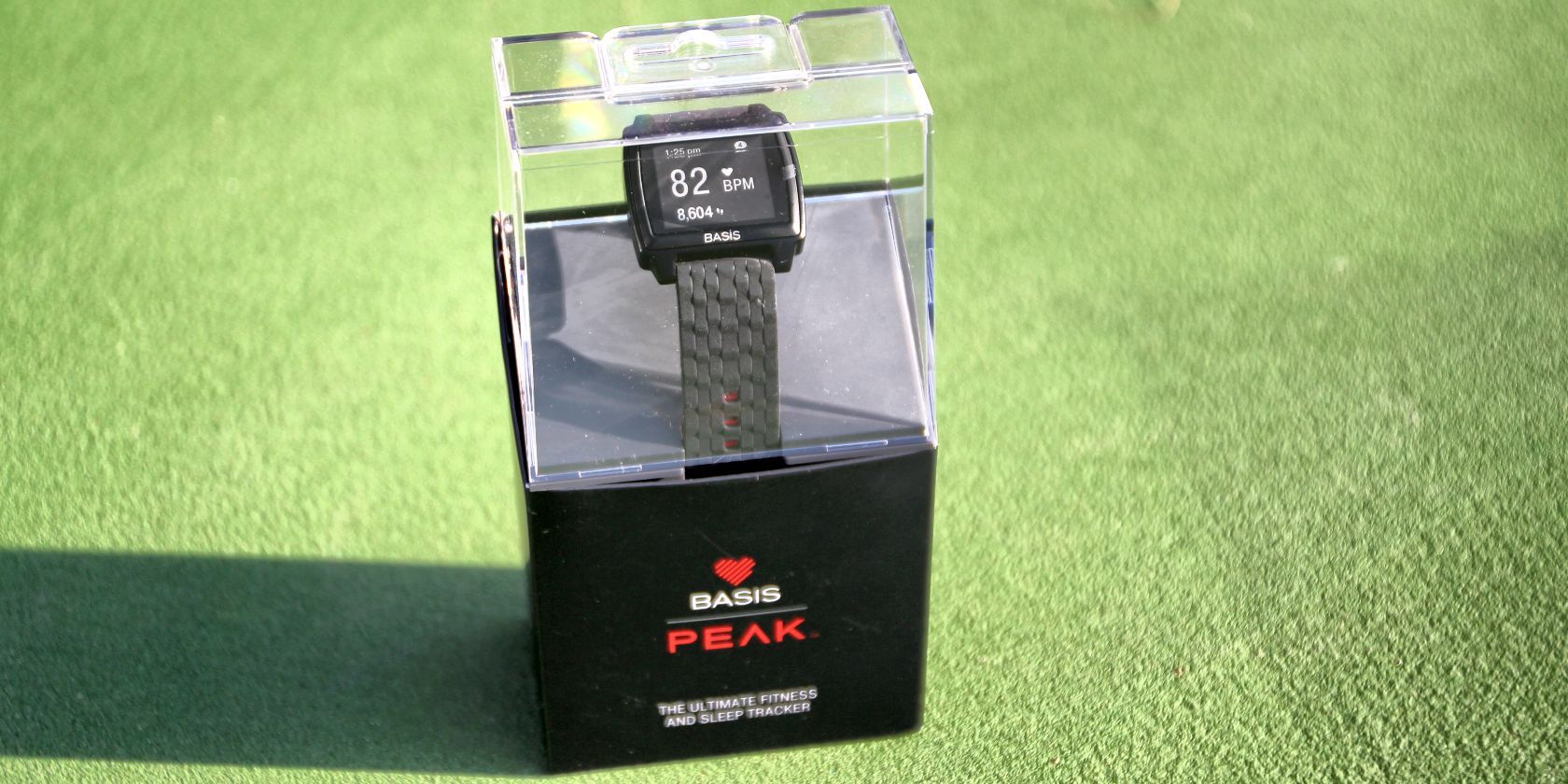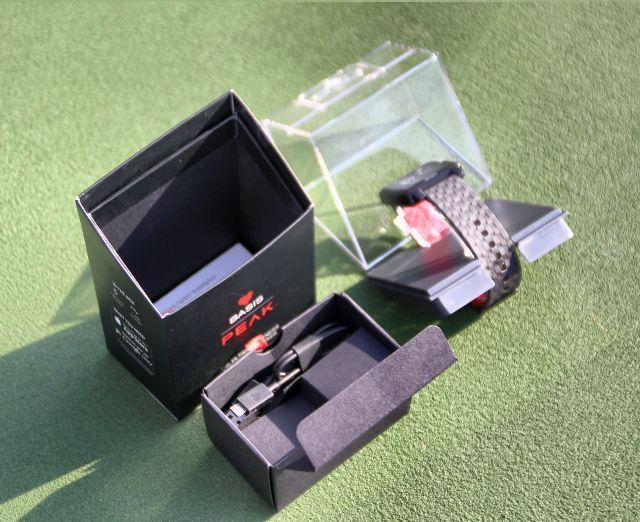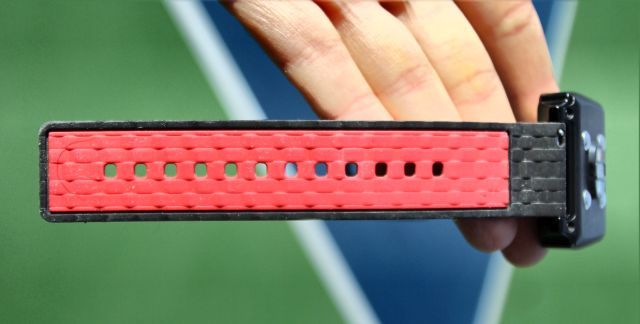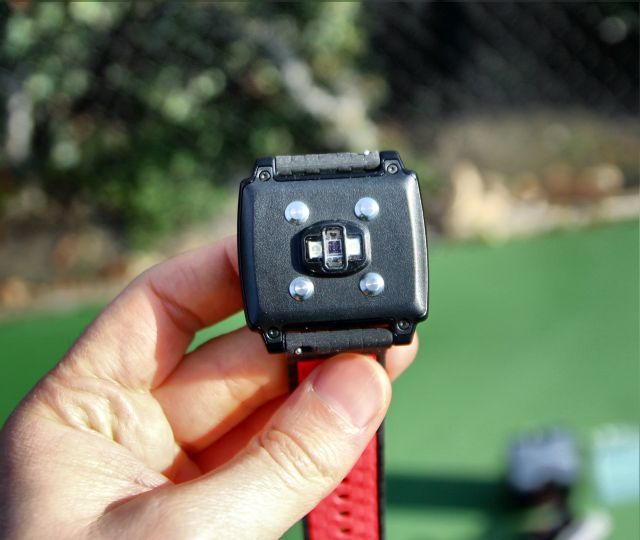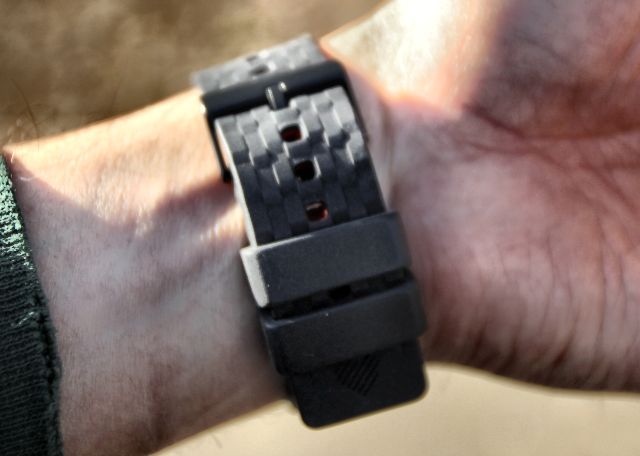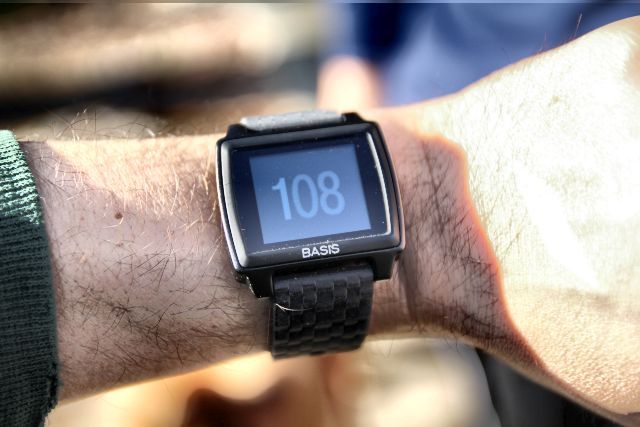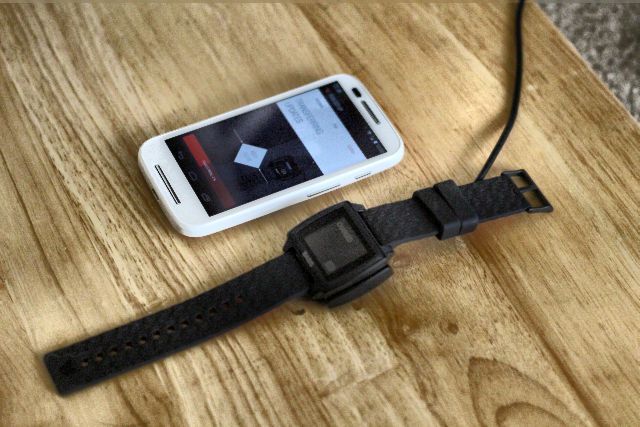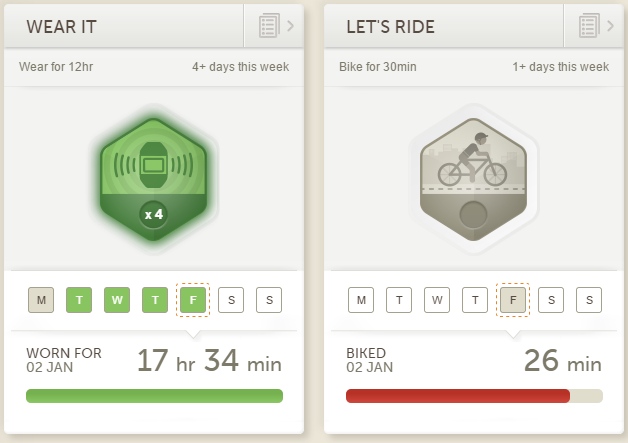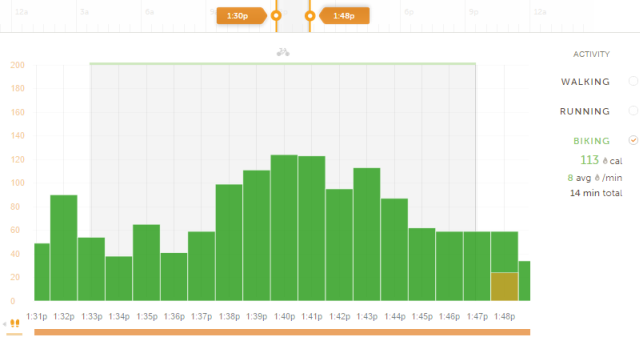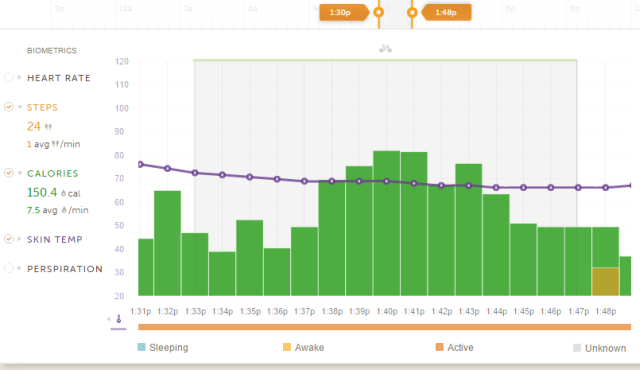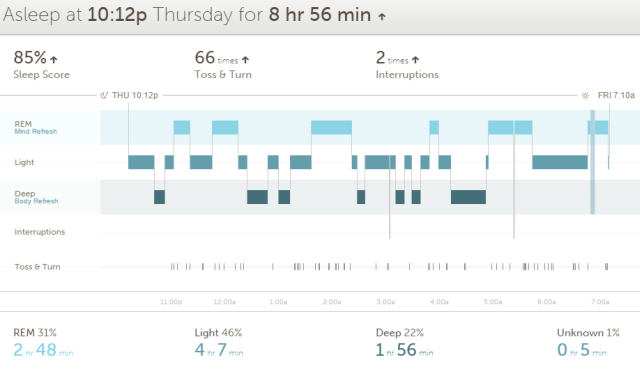Basis Peak
Don't buy it. At CES 2015, wearables firms announced at least a half-dozen similar devices. Some of these gadgets offered EKG readings, others offered more accurate heart-rate sensor measurements. The Peak is a worthy device, but you should wait until the second quarter of this year, when a large number of competing health trackers launch. If Basis's offering still compares favorably, then consider a purchase.
Basis Science, a fitness wearables firm, entered a new phase under Intel's ownership in 2014. Its first product developed with Intel's guidance: The $200 Basis Peak – the 2014 update on its 2012 smartwatch, the Basis B1. So did Basis improve on the already excellent Basis B1 or is there room for improvement?
(Note: In the video I erroneously state that the Basis Peak uses Mio's green LED sensor technology – it does not! The Peak's sensor technology is proprietary to Basis Science and is not in any way affiliated with Mio.)
Aesthetics and First Impressions
The Basis Peak overhauls the design of the original Basis B1 Health Tracker (our Basis B1 review). The Peak radiates rugged build quality. Gorilla Glass 3 now protects a recessed mono-chromatic LCD screen, housed in an aluminum shell. For the wrist strap, Basis employs a high grip, 22mm replaceable, silicone rubber band. The silicone rubber features an uneven surface, which enhances its tactile characteristics and makes it a joy to handle.
The band attaches using a standard latching mechanism, clipping onto the wrist with ease. Users just pull the band's tail through the latch, locking it into place. The rear assembly houses a green LED optical sensor, surrounded by four metal studs. These studs function as wrist-contact sensors; when two of these studs make contact with skin, the LED lights flare up, reading one's pulse and other biometric data.
At the tail end of 2014, few wearable sensors offered accurate heart-rate reads for jogging -- I'm told that movement caused by jogging (along with outdoor light) can disrupt an accurate sensor read of one's heart-rate. This remains the primary failing of many heart-rate tracking wearables, particularly Android Wear devices. Given the Peak's sensor positioning and lack of light isolation present in its rear housing, I would guess that it won't offer the accuracy of in-ear or chest-strap wearables.
I rate the Peak high in build quality and aesthetics -- but its sensor positioning leaves me feeling skeptical of its accuracy for heart-rate tracking while jogging.
Hardware
The Basis Peak offers a near-uniform improvement over the technology used in its predecessor, the Basis B1. Instead of using a clip-on charging cradle, it employs a magnetic dock. The dock itself feels at least as high quality as the docks used in the Moto 360 and the LG G Watch. The user only need position the Peak over the dock and the magnets will connect the two.
The internal components of the basis break down to its low-drain monochromatic LCD screen (similar to the Pebble, which we reviewed), Basis's sensor suite, a battery size of less than 300 mAh and a lightweight chipset. I could not find information pertaining to the Basis's internal components, but it likely employs an ARM Cortex-M processor -- which the majority of fitness wearables use. Given its minimal user interface, it also likely uses an embedded operating system (what's an embedded OS?) and even with its sensors blazing 24 hours a day, it probably sips little power.
The Peak's display no longer relies on OLED technology. It instead uses monochromatic LCD, which allows for better battery life and daylight readability. It also throws in an LED backlight – although the quality of the backlight falls short of awful. There's terrible light-bleed from the right side of the screen. Keep in mind, though, that health trackers aren't designed with display beauty in mind. They do one thing: They display your health metrics. Anything beyond that wastes battery life.
Overall, the hardware looks solid for a fitness wearable. Basis rates the battery life at 4 days of use – I got around 3 days of continuous use before the battery began to run low. But for a device that tracks activity automatically, meaning its sensors fire away throughout the day (and night), the battery life is admirable. Overall, the hardware is solid.
Teething Problems
Unfortunately, while the aesthetics and build quality rank high, it appears the initial production run of the Basis Peak suffered from numerous quality control and firmware problems.
The first Basis Peak that I received failed to turn on or charge. Basis's customer support recommended returning the device through Amazon. It was a brickette. The second Basis Peak turned on after charging, but would not sync to the Moto X 2014 edition or any tablet. It also arrived with 0% battery remaining – this speaks poorly of Basis's quality control. The quality of Lithium-ion batteries degrades at a very rapid rate when completely drained and there's no way of knowing how long the Basis Peak remained in storage. The battery could have suffered from significant battery damage. They also discharge at a relatively slow rate, so receiving a completely discharged battery means it had been warehoused for an extended period of time or suffers from a bug which discharges the battery. In either instance, Basis should seek to immediately remedy the issue or they will otherwise lose a great deal of money from returns, labor costs on support, and a loss in sales from dissatisfied customers. Judging from their own support forums, I am not alone in having experienced issues.
The second unit failed to sync with a variety of tablets and a Moto X 2014. It seemed to experience a tremendous amount of difficulty working with Android 5.0. I learned that the Basis Peak does not ship with any kind of firmware (operating system) installed and that users install the firmware when they first sync with their smartphone or tablet. This suggests that Basis rushed production in order to meet the holiday season and then did not adequately flesh-out installation of firmware on its smartwatch.
After several hours of troubleshooting, I eventually got the firmware (version 1.6.9.0) update to install using a Motorola Moto E with Android 4.4 installed – after three tries. It appears that if the phone goes to sleep, it interrupts the Bluetooth data transfer. This is actually a bug within the Basis Peak application itself, as Android does permit apps (in 4.4) to keep a phone awake when a data transfer is active.
My best guess for Basis's problem plagued launch is that management decided to manufacture the Basis Peak in volume, before even designing the firmware. While they did make the holiday season with its launch, the finished product suffers from numerous teething issues.
Here's what I learned so far about the Basis Peak's flaws:
- It's incompatible with Android 4.2 or lower.
- The Basis Peak can't pair over Bluetooth with Android 5. It should work for Android 4.3 and 4.4.
- You need to keep the phone's screen turned on throughout the 30-minute firmware update process.
- The Peak can't manually shut down – if separated from the charger for a period of four days or more, the battery will drain all the way down.
Living With The Basis Peak
The Peak tracks and records several health metrics: Heart-rate, skin temperature, caloric burn, steps and perspiration. Basis somehow manages to analyze this information and automatically determine whether a user walks, bikes, jogs or sleeps. It then works these numbers into Basis's gamification system, which provides incentives for users to continue exercising.
Users interface with their data through Basis's website, which logs and tracks the data. There are three general categories of health data: My Habits, Insights and Data.
My Habits
My Habits implements a gamification system, which rewards users if they meet specific exercise or behavioral targets. There's quite a few categories that users can choose – the trick is that Basis's system unlocks additional targets if the user continues to meet their goals. This system remains identical to that used by the Basis B1. Overall, gamification feels like a relatively useless feature. Although, by all means, if motivational systems encourage you to maintain a healthy lifestyle, give Basis's system a try. It differs little from FitBit's implementation (James wrote about the FitBit's gamification, located at the bottom of the article). You can also check out our FitBit One review.
Insights
The Insights portion of the data collected by the Basis displays daily activity totals. As mentioned previously, it covers jogging, sleeping, cycling and more. Users can filter the information by activity. For example, if I wanted to see only cycling activity, just check a filter and it displays that information as indicated in the graphic, below:
I can then filter my cycling data further through additional categories, such as caloric burn or skin temperature. I'm certain some users would find this feature useful, since one can determine average caloric burn per exercise session using this data. However, Basis does not generate this data and many statistic-obsessed users might find this omission infuriating. Basis does provide caloric burn per minute of exercise. But even so, I would prefer getting access to the raw data.
Data
The Data section gives users access to a slightly more detailed amount of exercise statistics. It also includes Basis's sleep tracking data, which can tell a user the quality of their sleep. Sleep data consists of four primary indicators: Deep sleep, light sleep and REM (rapid eye movement) sleep. Using its accelerometers, the Peak can also determine how many times the user moved while sleeping. Movement tends to be most common during light sleep, although it also occurs during REM sleep (because the user dreams in REM).
Conclusion
After attending CES 2015, I noticed that many wearable fitness tracking devices had worked in automatic detection of activity -- in a manner almost identical to the Basis Peak. I don't know if these devices will actually reach the market, but if they do, Basis's creation may not curry favor with users because of its poorly executed launch. While the Peak otherwise offers a solid upgrade over the 2013 Basis B1 Health Tracker, Basis never delivered on its promise to bring third party apps to market. On top of that, it never overhauled its web-based user interface.
[recommend]Don't buy it. At CES 2015, wearables firms announced at least a half-dozen similar devices. Some of these gadgets offered EKG readings, others offered more accurate heart-rate sensor measurements. The Peak is a worthy device, but you should wait until the second quarter of this year, when a large number of competing health trackers launch. If Basis's offering still compares favorably, then consider a purchase.[/recommend]
The winner will be selected at random and informed via email. View the list of winners here.
Send your products to be reviewed. Contact James Bruce for further details.

